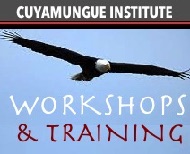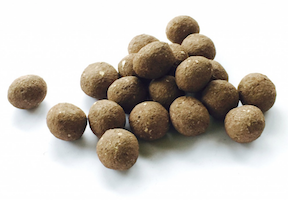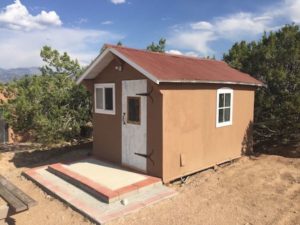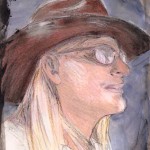
Letter from the President
by Paul Robear
The expansion and development of direct access to the non-ordinary reality – an Altered State of Consciousness (ASC) is the core of our research at the Cuyamungue Institute (CI). Through the practice of Ecstatic Trance Postures we bridge the ordinary reality with non-ordinary reality.
While any discussion of ASC often brings up plant-based induced experiences, it turns out the vast majority of indigenous cultures throughout the world and through time did not use psychoactive substances. In fact the evidence suggests that trance states are far more reliably reached, maintained, and navigated with “sonic driving,” the monotonous monotone rhythm of a rattle or drum. Because the brain is unable to attend to two external stimuli simultaneously, this actually helps the brain to focus, and break from the activity of the outer environment. This leaves the Ecstatic Trance Posture practitioner freed to more fully embrace the experience of non-ordinary reality.
At CI we research and explore Ecstatic Trance Postures as a means to achieve this physiologically-induced shifting of consciousness not through botanicals, drugs or outside agents, but with sonic driving while holding a simple sitting or standing posture among the many depicted in ancient indigenous art. The ease with which we enter ecstatic trance states demonstrates that this capacity is indeed a natural extension of the human experience. It is part of our ancestral heritage. Our distant ancestors knew this and utilized it for the benefit of their societies.
We are proud to share the following new video to provide an overview of the work at the Cuyamungue Institute. This video is particularly special to us as we carry on the work of Dr. Goodman. In reviving this lost legacy and bringing it forward to today, we are bridging two worlds.
In This Issue
- 2018 Workshop Season – we are now taking registrations.
- Seed Balls – Ancient technique for propagating plants
- Cuyamungue Institute’s New Tiny House
—Scroll down for links to articles.
Once again, thank you for your continued support of CI !
Paul Robear
President / Executive Director
Cuyamungue: The Felicitas D. Goodman Institute
![]()
 2018 Workshops, Events and Training at Cuyamungue:
2018 Workshops, Events and Training at Cuyamungue:
Each workshop contains a specifically designed series of ritual postures to provide the context for a journey of self-discovery. We go deep within utilizing the Cuyamungue Method – which includes a established ritual journey method. Introductory workshops are are prerequisites for advanced classes.
Here is the announce workshops and events for 2018 at the Cuyamungue Institute, so you can get the jump-start on making your plans to join us. There may be adjustments to dates, times and details, and additional events and workshops will be added. Contact us prior to booking flights and making travel arrangement. Feel free to ask questions.
May 16 – 20 Initiatory Training – A powerful, compacted introduction to this work.
July 4 – 8 Initiatory Training – Advanced Course
July 17- 22 Masked Trance Dance – collectively weave together a ritual dance and ritualJuly 31 – Aug 5 Instructor Training – Learn to teach this safe and effective processAugust 15 – 19 Initiatory Training – A powerful, compacted introduction to this work.Sept 18 – 23 Initiatory Training – Advanced Course – Equinox Celebration.Dates to be Announced:Mens Conclave – . Please contact us for more information.One Day Intensives – Please contact us for more information.
![]()
Seeding the Land – ancient technique for propagating plants
by Laura Lee
 On the last day of the 2017 of our summer season, Dori Smith brought out a big batch of native seeds balls. She explained that she begins with a mixture of local, native seeds, selected from the offerings at Santa Fe’s Plants of the Southwest for their beneficial qualities, drought resistance, resilience, and beauty. The seeds are rolled up in little batches of a moistened mix of soil, compost, clay, and a dusting of red chile pepper to deter the appetite of the local fauna, then air dried.
On the last day of the 2017 of our summer season, Dori Smith brought out a big batch of native seeds balls. She explained that she begins with a mixture of local, native seeds, selected from the offerings at Santa Fe’s Plants of the Southwest for their beneficial qualities, drought resistance, resilience, and beauty. The seeds are rolled up in little batches of a moistened mix of soil, compost, clay, and a dusting of red chile pepper to deter the appetite of the local fauna, then air dried.
It’s a clever method of planting, just how Nature likes to provide all starts in life, from seeds to eggs — with a little protection and nourishment. —————> Full Article
![]()
 Cuyamungue Institute’s New Tiny House
Cuyamungue Institute’s New Tiny House
By Paul Robear
There is a social movement underway where people are choosing to downsize the space they live in. Tracing the tradition of small living back to the first days humans spent in caves, I can attribute my fascination to the modern-day tiny house movement to our need for a simpler, sustainable lifestyle.
Yes, I must admit to finding websites, articles and videos of pioneers of the tiny house movement engaging on many levels. It reminds me of the charm of the Institute and its small adobe buildings. CI’s founder, Dr. Goodman, choose to spend her time at CI in a small building of less than a couple hundred square feet.
And then I found a tiny house in the making by the side of the road ————–> Full Article
![]()
![]() Thanks for reading! Please forward this to your friends and acquaintances who will enjoy learning more about us, and please let me hear from you! I am most happy answer any and all questions about the Institute or the Cuyamungue Method. We welcome all correspondence. Not already subscribed? Subscribe Here.
Thanks for reading! Please forward this to your friends and acquaintances who will enjoy learning more about us, and please let me hear from you! I am most happy answer any and all questions about the Institute or the Cuyamungue Method. We welcome all correspondence. Not already subscribed? Subscribe Here.
Email me directly at paulrobear@cuyamungueinstitute.com . 
Blessings,
Paul Robear
President / Executive Director
Cuyamungue – The Felicitas D. Goodman Institute
